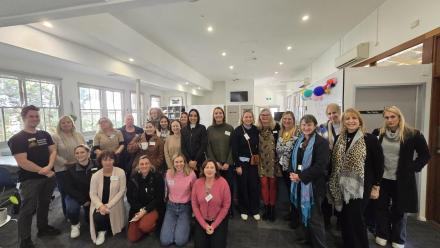Head in the Clouds: ANU undergraduate student's journey to academic publication through cyclone research
I really believe in interdisciplinary research work, because I think the best way to move a field forward is to bring together different, more disparate fields. That's the easiest way to push innovation, because you bring in new ideas and novel concepts.
As a child growing up in Cairns, Jack Miller was exposed to more cyclones than most Australians, and he particularly remembers being evacuated from his home and experiencing the destructive impacts of Cyclone Yasi in 2011. These experiences increased Jack’s interest in cyclones, yet he still didn't think much about how they form. “It’s weird but I’d never looked at clouds before, actually looked at clouds and what they mean for the instability of the atmosphere.”
In his first year as a Bachelor of Philosophy (Honours) (PhB) student at The Australian National University (ANU), Jack was given an opportunity to do just that. On his lecturer’s recommendation, Jack applied for a Research Assistant role at the ANU Institute for Climate, Energy and Disaster Solutions (ICEDS), to explore the feasibility of various cyclone interventions. While the concept of intervening to potentially weaken or even stop cyclones initially seemed to Jack like “a bit of a wacky idea straight out of the 1960s space race,” some digging demonstrated that it might not be as impossible as it appeared.
Supported by ICEDS Director Professor Mark Howden and ICEDS Head of Disaster Solutions Associate Professor Roslyn Prinsley, Jack’s initial work was to conduct a technical review of cyclone interventions including cloud seeding, sea surface temperature modification, high altitude particle injection, and aerosol injection. While past experiments such as the US government’s Project Stormfury in the 1960s and 70s were unsuccessful, Jack determined that other technologies, such as high-altitude particle injection and aerosol injection hold promise.
Jack’s review of potential interventions was supplemented by governance and risk research by ANU PhD candidate Aaron Tang, and by cyclone modelling and meteorology expertise from ICEDS Research Fellow, Dr Thao Linh Tran. This interdisciplinary approach allowed the team to consider not just the potential feasibility of various interventions, but also the ecological, governance and social implications. Cyclones don’t take note of national borders, and therefore the logistics and politics of potential cyclone intervention are incredibly complex. If not well managed, these technologies would be vulnerable to exploitation for political or economic purposes. Governance of both the research and deployment of these technologies must be considered carefully.
Read the full article here: Head in the Clouds: ANU undergraduate student's journey to academic publication through cyclone research | ANU Institute for Climate, Energy & Disaster Solutions
Photo: Christopher Jackson


